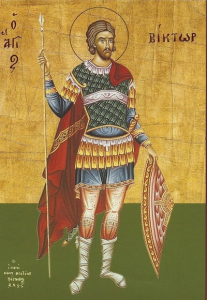 Saint Victor of Marseille
Saint Victor of Marseille
Soldier and Martyr († 290)
Feast – July 21
“I give you a new commandment: love one another. As I have loved you, so you also should love one another. This is how all will know that you are my disciples, if you have love for one another.” (John 13:34-35)
Love for one another, high moral standards, the idea of mutual service, and the goal of obtaining a happy afterlife were the major characteristics that distinguished Christians from other citizens of the world in the third century and this brought many new converts to the Catholic Church. At the same time Christianity was considered to be a threat to the Roman Empire. With Christianity came limitations, human life gained value. Many things which average citizen would do without thinking to please the emperor or his minions were off limits for Christians. Despotic rulers couldn’t fully control them. For example, when a revolt started in one region of the Roman Empire it was always quelled using soldiers from a different region with no emotional attachment to locals. Spreading Christianity was a great obstacle to such tactics. To Christians all people are children of God, no matter where they reside, what language they speak or what the color of their skin is. In 286 AD, a legion of soldiers made up of over 6000 Christian Copts (Egyptian), had been called from Thebes in Egypt to Gaul to assist Emperor Maximian in defeating a revolt by the bagaudae, (impoverished local free peasants, reinforced by brigands, runaway slaves and deserters from the legions). St. Maurice, the leader of the Roman Theban Legion pledged his men’s military allegiance to Rome but he stated that service to God superseded all else. He said that to engage in wanton slaughter was inconceivable to Christian soldiers. Before going into battle, they were instructed to offer sacrifices to the pagan gods. He and his men refused to worship Roman deities and as a result the entire legion was massacred. Furious and dripping with the blood of the Theban legion, emperor Maximian turned his attention at Marseilles, the most numerous and flourishing church in Gaul. The tyrant brought here nothing but slaughter. His coming filled Christians with fear and alarms.
At the time St. Victor, a Catholic officer of the Roman army known for his noble lineage, military valor, and intelligence, served in the garrison of Marseille. He developed a strong apostolate with his fellow men of arms and the people of the city. In the nighttime he was going from house to house visiting the faithful and inspiring them to courageously face the persecution of those times with contempt of a temporal death and the love of eternal life.
The Emperor Maximian, arrived at Marseilles in person in the year 290. When St. Victor’s activities were discovered by enemies of the Faith, he was arrested and brought before the tribunal of the prefects Asterius and Eutychius, who exhorted him not to lose the fruit of his imperial service and the favor of his prince for the worship of a dead man. He answered that he renounced temporal rewards, if he could not enjoy them without being unfaithful to Jesus Christ, the eternal Son of God, who had vouchsafed to become man for our salvation, and who after dying raised Himself from the dead, to reign perpetually with the Father, being God equally with Him. The entire court received this witness with shouts of rage, but due to his distinction, they sent him to the Emperor himself. The tyrant imposed cruel torments on him in an attempt to make him deny the Catholic Faith. St. Victor was bound hand and foot and dragged through the streets of the city, exposed to the blows and insults of the populace.
He was brought back bruised and bloody to the tribunal of the prefects, who, thinking his resolution must have been weakened by his sufferings, pressed him again to adore their gods. However, the martyr, filled with the Holy Spirit, expressed his respect for the emperor but his contempt for the debauched gods adding: “I despise your deities, and confess Jesus Christ; inflict upon me what torments you please.”
St. Victor was hoisted on the rack and tortured for a long time. Jesus Christ appeared to him on the rack, holding a cross in his hands, gave him his peace, and told him that he suffered in his servants, and crowned them after their victory. The tormentors grew weary and the prefect ordered him to be taken down and thrown into dungeon.
At midnight God visited him by His Angels. The prison was filled with a light brighter than that of the sun, and the martyr sang with the Angels the praises of God. Three soldiers, Alexander, Longinus, and Felician who guarded the prison, upon seeing this light, cast themselves at the martyr’s feet, asked his pardon, and expressed their desire for baptism. Victor instructed them as well as time would permit and sent for a priest the same night. The five of them went to the seashore, and the three converts were baptized, then all returned to the prison.
The next morning Maximian was informed of the conversion of the guards, and, in a transport of rage, sent officers to bring them all four before him in the middle of the marketplace. The mob loaded St. Victor with injuries and would vainly compel him to bring back his converts to the worship of their gods; but he said, “I cannot undo what is well done.” And turning to them he encouraged them saying, “You are still soldiers; behave with courage, God will give you victory. You belong to Jesus Christ; be faithful. An immortal crown is prepared for you.” The three soldiers persevered in the confession of Jesus Christ, and by the emperor’s orders were forthwith beheaded.
St. Victor was again placed on the rack, scourged, and carried back to prison, where he remained for three more days, recommending to God his martyrdom with many tears.
After that term the emperor called him before his tribunal and ordered to be taken to a pagan temple to burn incense to the false idol, Jupiter. St. Victor went up to the altar and kicked the statue to the ground. Indignant Emperor order that St. Victor’s foot be chopped off. The Saint suffered this mutilation with great joy, offering to God these first fruits of his body.
Then emperor condemned him to be crushed by a millstone. The executioners turned the wheel, and when part of his body was bruised and crushed, the mill broke down. When the mill broke down an order was given to behead him at once. His body with those of the other three heroes of Christ, Alexander, Felician and Longinus, were thrown into the sea, but cast ashore on the opposite bank by a current. They were buried by the Christians in a grotto hewn out of the rock. Very great miracles were wrought at St. Victor’s tomb or by his intercession, including the resurrection of a girl in her coffin, which occurred beside her open grave. His relics were kept for centuries in the Abbey of Saint Victor in Marseille. The French Revolution tried to destroy them, but they were preserved and today are in the Church of St. Nicolas of Chardonnay in Paris.
References and Excerpts:
[1] “St. Victor of Marseille – Saint of July 21.” https://www.traditioninaction.org/SOD/j186sd_VictorMarseille_7-21.html (accessed Jul. 17, 2020).
[2] “Saint Victor of Marseille, Soldier and Martyr.” https://sanctoral.com/en/saints/saint_victor_of_marseille.html (accessed Jul. 17, 2020).
[3] “ALL SAINTS: ⛪ Saint Victor of Marseilles – Martyr,” ALL SAINTS, Jul. 21, 2017. https://saintscatholic.blogspot.com/2017/07/saint-victor-of-marseilles-martyr.html (accessed Jul. 17, 2020).
[4] MSW, “The Theban Legion Massacre AD 286,” Weapons and Warfare, Mar. 21, 2018. https://weaponsandwarfare.com/2018/03/21/the-theban-legion-massacre-ad-286/ (accessed Jul. 17, 2020).
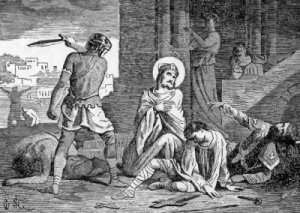 Saint Irenaeus
Saint Irenaeus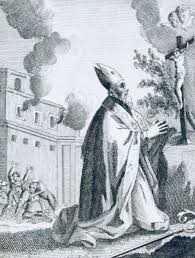 Saint Mammertus
Saint Mammertus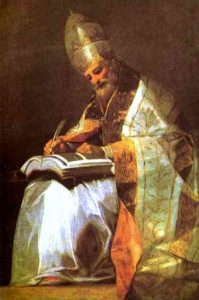 Saint Leo the Great
Saint Leo the Great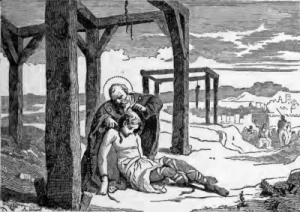 Saint Wulfran
Saint Wulfran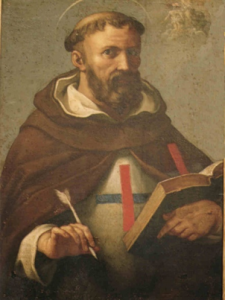 Saint John of Matha
Saint John of Matha Consequently, Pilate tried to release him; but the Jews cried out, “If you release him, you are not a Friend of Caesar. Everyone who makes himself a king opposes Caesar.” When Pilate heard these words he brought Jesus out and seated him on the judge’s bench in the place called Stone Pavement, in Hebrew, Gabbatha. It was preparation day for Passover, and it was about noon. And he said to the Jews, “Behold, your king!” They cried out, “Take him away, take him away! Crucify him!” Pilate said to them, “Shall I crucify your king?” The chief priests answered, “We have no king but Caesar.” (John 19:12-15)
Consequently, Pilate tried to release him; but the Jews cried out, “If you release him, you are not a Friend of Caesar. Everyone who makes himself a king opposes Caesar.” When Pilate heard these words he brought Jesus out and seated him on the judge’s bench in the place called Stone Pavement, in Hebrew, Gabbatha. It was preparation day for Passover, and it was about noon. And he said to the Jews, “Behold, your king!” They cried out, “Take him away, take him away! Crucify him!” Pilate said to them, “Shall I crucify your king?” The chief priests answered, “We have no king but Caesar.” (John 19:12-15)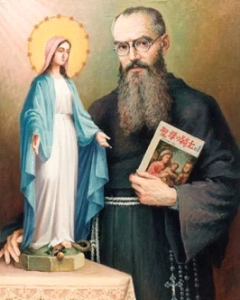 St. Maximilian Kolbe during his time as a student in Rome witnessed the violent demonstrations of Freemasons under the windows of the Vatican showing an image of the archangel, St. Michael lying under the feet of the triumphant Lucifer. As a response on October 16, 1917 with six other friars he founded the Militia Immaculata (Army of the Immaculate One) with the aim of converting sinners, enemies of the Catholic Church, heretics and schismatics, particularly freemasons, through the intercession of the Virgin Mary. To accomplice this task he began to publish The Knight of the Immaculate to “illuminate the truth and show the true way to happiness.”
St. Maximilian Kolbe during his time as a student in Rome witnessed the violent demonstrations of Freemasons under the windows of the Vatican showing an image of the archangel, St. Michael lying under the feet of the triumphant Lucifer. As a response on October 16, 1917 with six other friars he founded the Militia Immaculata (Army of the Immaculate One) with the aim of converting sinners, enemies of the Catholic Church, heretics and schismatics, particularly freemasons, through the intercession of the Virgin Mary. To accomplice this task he began to publish The Knight of the Immaculate to “illuminate the truth and show the true way to happiness.”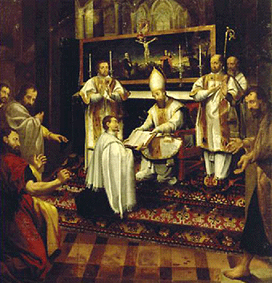 Saint Hilary of Poitiers
Saint Hilary of Poitiers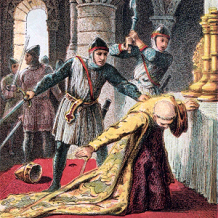 Saint Thomas Becket
Saint Thomas Becket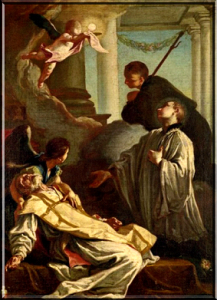 Saint Andrew Avellino
Saint Andrew Avellino